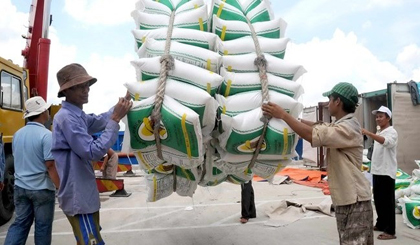Halting rice export slowdown
According to the Ministry of Agriculture and Rural Development, Vietnam’s rice exports remain stagnant, with shipments in the first eleven months of the year amounting to only 4.54 million tonnes earning US$2 billion—down 25% in volume and 20.3% in value.
 |
| The rice export target of 5 million tonnes for 2016 is now unfeasible. |
It was the sector’s worst performance since 2009 and the target of 5 million tonnes for 2016 has become unfeasible.
Shrinking rice exports mean larger amounts of rice remaining in stock domestically and a reduced demand to purchase rice from farmers at a time when the southern provinces have begun planting a new crop.
This dismal situation has affected the incomes of tens of thousands of rice growers as well as exporters, undermining confidence in the plans to revamp the agricultural sector and rice production in particular.
There are many reasons for the export slowdown.
First global rice demand is sluggish. China, the largest buyer of Vietnamese rice, has reached its import quota for this year, while Vietnam’s rice exports to the Philippines, Malaysia, Singapore and the US all fell sharply. In addition, many other rice-exporting countries enjoy abundant crops, causing supply to outstrip demand.
Meanwhile at home, forecasts about the global rice market have been inaccurate and rice production has not been quickly adjusted in accordance with market developments. Moreover, Vietnam does not have well-known rice brands and premium rice varieties, leading to a dilemma that while the export sector is struggling with large inventories of cheap rice, imported premium rice is silently making its way onto the domestic market.
In order to halt the slowdown in rice exports and boost the market, agricultural agencies and exporters need to actively step up promotional programmes in promising markets in Africa, address difficulties in the Philippine and US markets and even seek ways to export more to China.
In the long term, the rice restructuring plan should be implemented in a more aggressive way by focusing on developing rice brands and diversifying production into varieties appealing to consumers, such as jasmine rice, specialty rice and functional rice, so that branded rice will account for one fifth of Vietnam’s total rice exports in 2020 and 50% in 2030.
(Source: NDO)
.
 về đầu trang
về đầu trang






